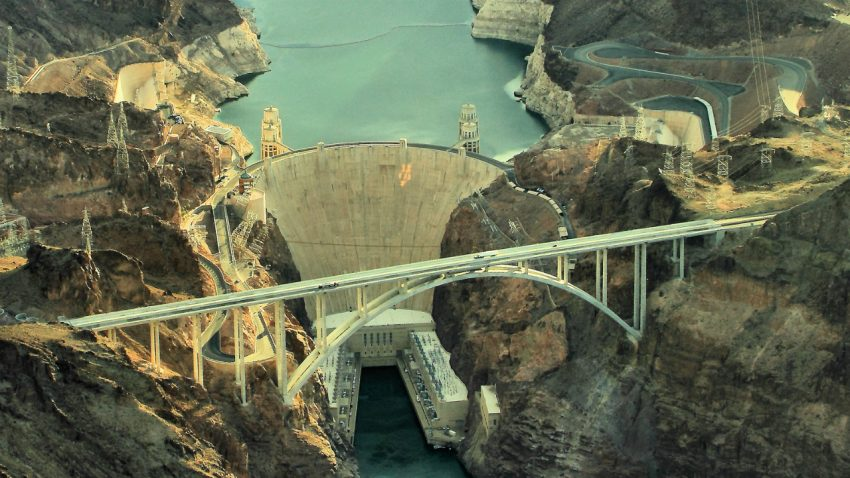 |
| Reviews and Templates for Expression We |
Hundreds of new dams could mean trouble for our climate

Sediment trapped behind dams, such as the Hoover Dam on the Colorado River, can become a feeding ground for microbes that burp methane. Airwolfhound/Flicker (CC BY-SA 2.0)
Using rivers and dams to make electricity is often touted as a win for the climate, a renewable source of electricity without the greenhouse gases that come from burning fossil fuels. But it turns out hydropower isn’t quite so squeaky clean—and with countries around the world poised to erect hundreds of new dams, that could have big implications for future emissions.
Reservoirs already contribute roughly 1.3% of the world’s annual human-caused greenhouse gas emissions, the study finds—about as much as the entire nation of Canada. It also suggests future reservoirs will have a bigger impact than expected, largely because they emit much more methane, a potent warming gas, than once believed. The methane is produced by underwater microbes that feast on the organic matter that piles up in the lake sediments trapped by dams.
At a time when nations have as many as 847 large hydroelectric dams in the works, the finding “suggests that the impact of that global impoundment will be greater than previously thought,” says John Harrison, a biogeochemist at Washington State University, Vancouver, and one of the authors of the paper, scheduled to be published next week in BioScience.
Harrison and colleagues compiled and analyzed the findings of more than 100 studies of emissions from more than 250 reservoirs around the world. They also took account of a factor some previous studies of reservoir emissions had overlooked: bubbles. Some greenhouse gases, including carbon dioxide and nitrous oxide, readily dissolve in water and then diffuse into the atmosphere in a fairly uniform way. Methane, in contrast, often surfaces in sporadic bubbles. That’s made it hard to get a clear picture of how much of the warming gas—which is 34 times more powerful than carbon dioxide—is rising off a reservoir.
But new tools, such as special bubble-tracking sonar, have turned up a lot more methane. On average, studies that included methane bubbles found more than double the amount of the gas coming from reservoirs. Overall, the researchers concluded that each square meter of reservoir surface exhaled 25% more methane into the atmosphere than previously thought.
For existing reservoirs, the new study found a slightly lower total amount of greenhouse gases—770 megatons per year—than previous studies. That’s because the researchers used a new, lower estimate for the total size of the world’s reservoirs, Harrison says. But the higher methane emissions per unit area mean that the impact of future dams could be larger than expected.
Vincent St. Louis, a biogeochemist at the University of Alberta, Edmonton, in Canada and lead author of a 2000 BioScience paper that was the first to gauge global emissions from reservoirs, praised the new study for highlighting the importance of this particular greenhouse gas. “Methane's the story, and we need to get a better handle on the methane part of things,” he says.
The focus on methane could help guide decisions about where to put a dam, Harrison says. Dams on river systems with fewer nutrients to feed algae growth could produce less methane, for instance, than dams on higher nutrient streams. St. Louis adds that the new study also shows the potential cost of siting dams in dry landscapes, which can absorb and break down methane, but might become methane producers if drowned beneath a reservoir.
The results also highlight the importance of adding reservoirs to the calculations that countries make to gauge their overall greenhouse gas emissions, Harrison says. Today, greenhouse gases coming from those water bodies aren’t counted, though activities that produce comparable amounts of planet-warming gas, such as growing rice, are. But the Task Force on National Greenhouse Gas Inventories, an arm of the United Nations’s Intergovernmental Panel on Climate Change, is weighing whether to include reservoirs in a new set of guidelines to be released in 2019.
“Dams provide a lot of important services,” Harrison says. “They’re often considered clean, renewable sources of power, and the greenhouse gas emissions are not considered. The work that we and others are doing helps to tell the whole story.”
|
|
|
|
Copyright remains with the original authors |